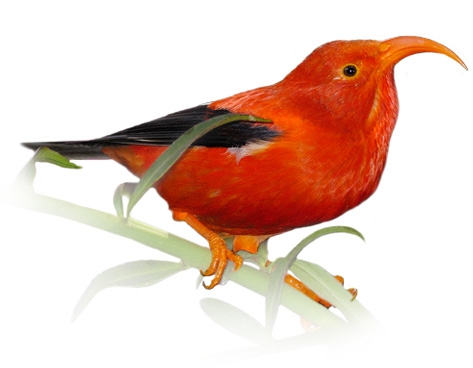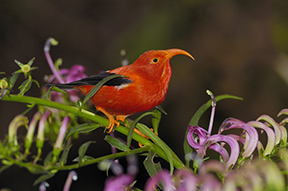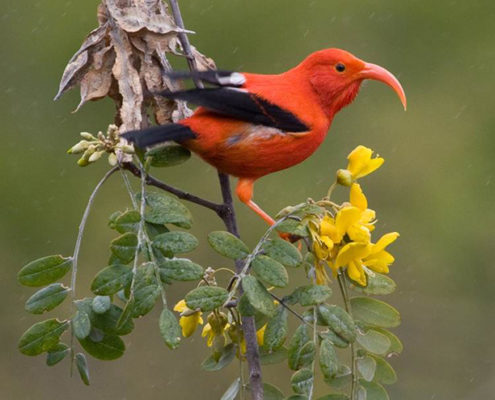
‘I’iwi
Drepanis coccinea
The ‘i’iwi is one of the most distinctive birds found on Kaua’i, with bright scarlet feathers, black wings and tail, and long, decurved pink bill. Juvenile birds appear mottled with black and yellow-brown feathers, but the large decurved bill distinguishes ‘i’iwi from all other Hawaiian forest birds.
‘I’iwi predominantly feed on nectar, and are regularly seen in flowering ‘ōhi’a trees. Like ‘apapane, ‘i’iwi are thought to be important pollinators of ‘ōhi’a trees, while insects also make up a small portion of their diet. The peak breeding season is between February and June. Both sexes will aid in the construction of the nest, which is typically a cup nest placed in the outer branches of ‘ōhi’a trees. Only the females will incubate the two eggs, while males will sing their song from nearby perches.
‘I’iwi feathers were highly prized by Hawaiian royalty, and they were often used to make feathered cloaks and helmets. Today ‘i’iwi are highly susceptible to avian malaria; a large percentage of birds die from a single infected mosquito bite. ‘I’iwi are common on Maui and Hawai’i, and uncommon or rare on O’ahu, Lana’i and Moloka’i. Unfortunately, as documented in a recent USGS report, ‘i’iwi, while still somewhat common on Kaua’i, with a small population of ~1,855 (Paxton et. al. 2020) though they are rapidly declining.
.







